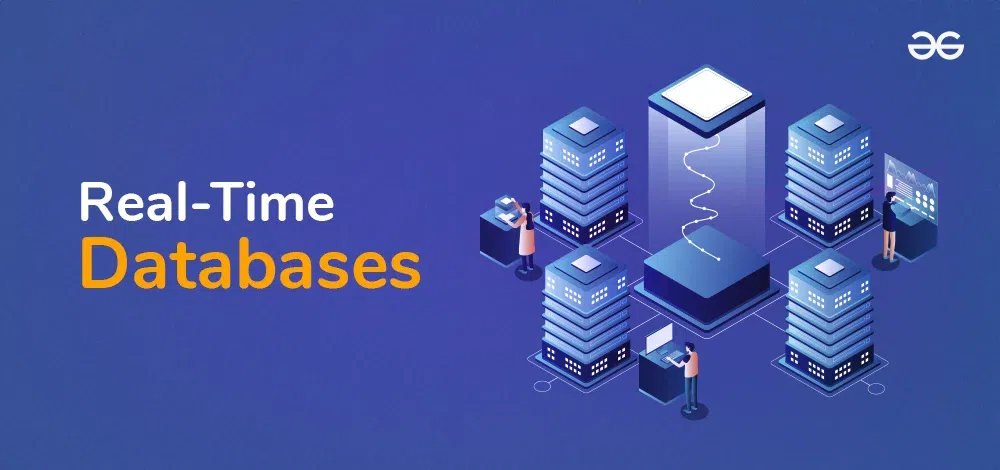Part 7: Real-World Applications and Trends
 CodeXoft KE
CodeXoft KETable of contents
- 1. IoT and Time-Series Data: Storing and Analyzing Sensor Data
- 2. Machine Learning and Databases: Integrating AI with Data Pipelines
- 3. Social Media Databases: Handling Users, Posts, and Relationships
- 4. Blockchain and Databases: Immutable Ledgers for Supply Chain
- 5. The Future of Databases: AI-Driven Optimization and Beyond
- Conclusion

1. IoT and Time-Series Data: Storing and Analyzing Sensor Data
The Rise of IoT and Time-Series Databases
IoT devices generate massive volumes of time-stamped data (e.g., temperature readings, GPS coordinates). Traditional databases struggle with the scale and velocity of this data, leading to specialized time-series databases (TSDB) like InfluxDB and TimescaleDB.
Example: Smart Factory Monitoring
Scenario: A factory uses sensors to track machine health.
Data Structure:
{
"timestamp": "2023-10-05T14:30:00Z",
"sensor_id": "machine_101",
"temperature": 75.4,
"vibration": 2.3,
"status": "normal"
}
Database Design:
-- TimescaleDB hypertable for scalable time-series storage
CREATE TABLE sensor_data (
time TIMESTAMPTZ NOT NULL,
sensor_id TEXT,
temperature FLOAT,
vibration FLOAT
);
SELECT create_hypertable('sensor_data', 'time');
Query: Identify machines with abnormal temperatures last week.
SELECT sensor_id, AVG(temperature) as avg_temp
FROM sensor_data
WHERE time > NOW() - INTERVAL '1 week'
GROUP BY sensor_id
HAVING AVG(temperature) > 80;
Challenge: Handling 10,000+ writes per second.
Solution: TimescaleDB’s hypertables auto-partition data by time for faster queries.
2. Machine Learning and Databases: Integrating AI with Data Pipelines
Databases as Feature Stores
Machine learning models rely on feature stores—centralized repositories of preprocessed data. Databases like PostgreSQL and Redis store features for model training and inference.
Example: Recommendation System
Scenario: An e-commerce platform recommends products based on user behavior.
Data Pipeline:
Collect: User clicks, purchases, and searches (stored in MongoDB).
Process: Aggregate user activity into features (e.g., "purchases_last_30_days").
Store: Save features in Redis for low-latency access.
Train: Use features to train a model (e.g., TensorFlow).
Redis Feature Storage:
import redis
r = redis.Redis(host='localhost', port=6379)
# Store user features
r.hset("user:101", mapping={
"total_purchases": 15,
"favorite_category": "electronics"
})
# Retrieve features for inference
features = r.hgetall("user:101")
Challenge: Ensuring real-time feature updates.
Solution: Apache Kafka streams data updates to the feature store.
3. Social Media Databases: Handling Users, Posts, and Relationships
Graph Databases for Relationship Mapping
Social platforms like LinkedIn use Neo4j to model complex relationships (e.g., "friends of friends").
Example: Friend Recommendations
Neo4j Cypher Query:
MATCH (user:User {id: "alice"})-[:FRIENDS_WITH*2..3]->(potentialFriend:User)
WHERE NOT (user)-[:FRIENDS_WITH]->(potentialFriend)
RETURN potentialFriend.name, COUNT(*) AS commonConnections
ORDER BY commonConnections DESC
LIMIT 10;
Challenge: Scaling graph traversals for millions of users.
Solution: Sharding and caching frequent queries.
4. Blockchain and Databases: Immutable Ledgers for Supply Chain
Blockchain Databases in Action
Blockchain databases like BigchainDB provide tamper-proof records for supply chain transparency.
Example: Food Traceability
Scenario: Track organic produce from farm to store.
Farm Entry:
{ "product_id": "organic_apple_001", "timestamp": "2023-09-01", "location": "Farm A", "certification": "USDA Organic" }Shipping Entry:
{ "product_id": "organic_apple_001", "timestamp": "2023-09-05", "shipper": "TruckCo", "temperature_controlled": true }
Query: Verify the entire journey of organic_apple_001.
# Blockchain query (pseudo-code)
blockchain = BigchainDB()
history = blockchain.get_history("organic_apple_001")
Challenge: Balancing transparency with data privacy.
Solution: Zero-knowledge proofs to validate entries without exposing details.
5. The Future of Databases: AI-Driven Optimization and Beyond
Trend 1: AI-Driven Databases
Automated Indexing: Tools like Amazon Aurora use ML to suggest optimal indexes.
Query Optimization: PostgreSQL pg_qualstats analyzes predicate usage for better plans.
Trend 2: Serverless Databases
AWS Aurora Serverless: Auto-scales based on demand.
MongoDB Atlas Serverless: Pay-per-request pricing for sporadic workloads.
Trend 3: Vector Databases for AI
Databases like Pinecone store vector embeddings for similarity search (e.g., image recognition).
Example: Finding similar products using image vectors.
# Store image embedding in Pinecone
pinecone.create_index("products", metric="cosine")
pinecone.upsert("products", vectors=[
("product_101", [0.2, 0.5, ..., 0.7])
])
# Query similar vectors
results = pinecone.query("products", vector=[0.3, 0.6, ..., 0.8], top_k=5)
Conclusion
From IoT to blockchain, databases are evolving to meet the demands of modern applications. By integrating ML, embracing scalability, and adopting cutting-edge trends, developers can build systems that are not just reactive but predictive.
Finally: In Part 8: Mastering Databases, we’ll explore full-stack integration, DevOps, and open-source contributions!
FAQs
Q: Are blockchain databases practical for everyday apps?
A: They’re niche but invaluable for audit-heavy industries (healthcare, supply chain).
Q: How do I start with AI-driven databases?
A: Experiment with cloud services like Amazon Aurora or tools like pg_qualstats.
Q: What’s the biggest hurdle in IoT databases?
A: Balancing write speed with query efficiency—time-series databases are purpose-built for this.
Subscribe to my newsletter
Read articles from CodeXoft KE directly inside your inbox. Subscribe to the newsletter, and don't miss out.
Written by

CodeXoft KE
CodeXoft KE
Full-stack developer specializing in building exceptional digital experiences. Transforming ideas into elegant solutions through clean code and intuitive design.